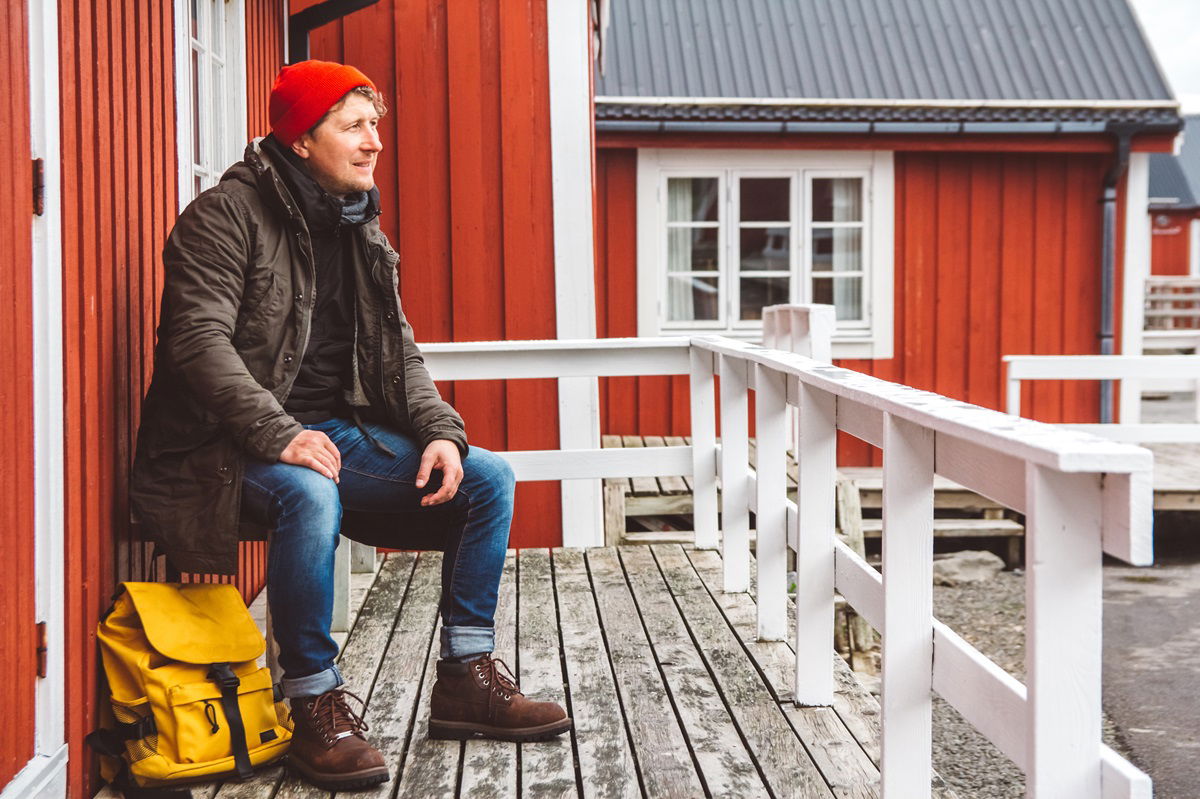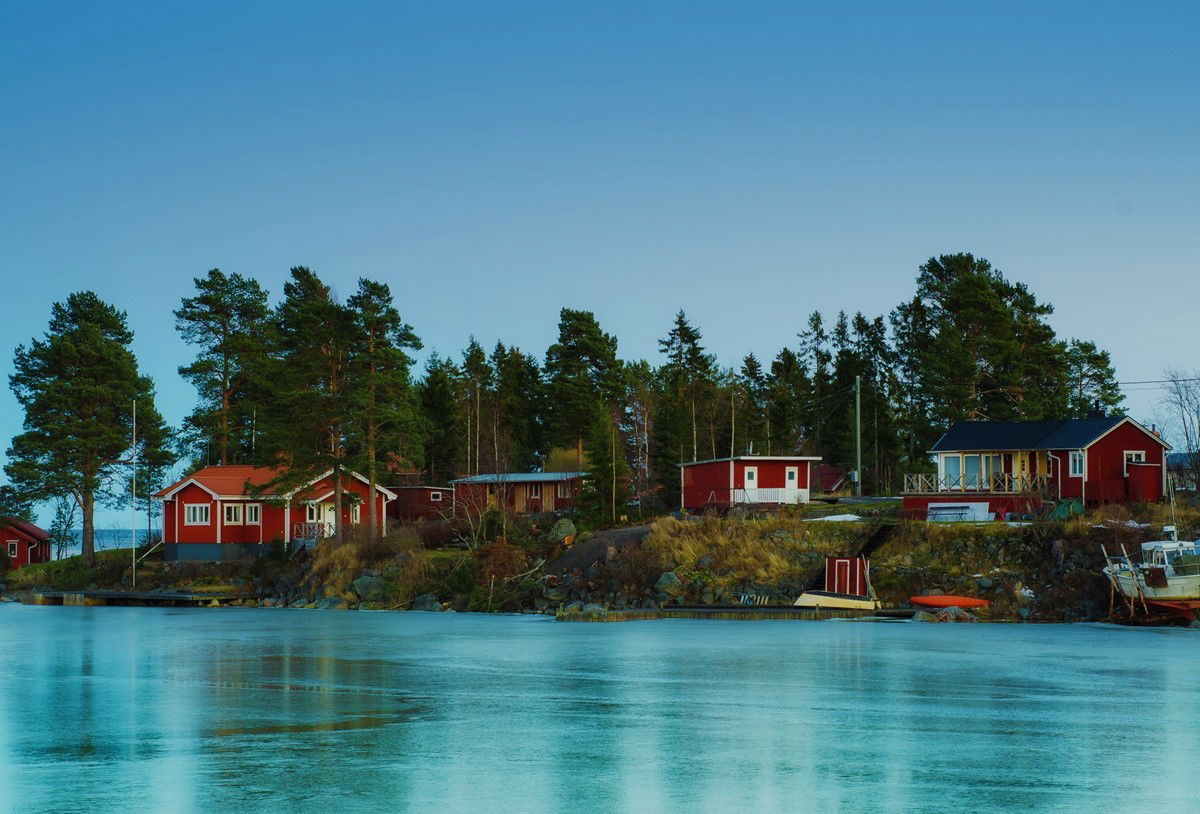
Living in Sweden
Virgin forests, countless lakes and impressive skerry landscapes – Sweden is a paradise for nature lovers. But there are also many traditions, such as the Midsommar festival, that make the country unique. Do you want to emigrate to Sweden and learn more about living in Sweden? We have the most important information for you about climate, leisure, infrastructure, housing, the cost of living and much more.
General information
Sweden is located on the Scandinavian peninsula and is the largest country in Scandinavia. It borders Norway to the west and Finland to the east. Sweden also has coastlines on the Baltic Sea and the Kattegat.
Sweden has an area of 450,295 square kilometres and is divided into 21 provinces. It has a population of about 10.5 million. Sweden is a parliamentary monarchy and is also called the Kingdom of Sweden. King Carl XVI Gustaf is the head of state but mainly has representative tasks. The head of government is Prime Minister Ulf Kristersson. Although Sweden is a member of the European Union, the currency remains the Swedish krona and not euros.
Nature & climate
In contrast to its neighbour Norway, the Swedish landscape is rather flat to hilly. The Skandes mountain range on the border with Norway features higher elevations. The country is covered by vast forests and over 100,000 lakes. Sweden is also known for its skerries. These are small rocky islands that were formed by the Ice Age. Sweden is also known for its large number of moose. You have to keep a careful look out for these when driving.
Versatile climate
The climate in Sweden is really quite mild for the country’s latitude. This is mainly due to its proximity to the Gulf Stream. Nevertheless, due to its elongated shape, the country sits in three climate zones, ranging from cool temperate to cold temperate to continental. It is milder in the south, colder in the north. Since the north of Sweden is located in the Arctic Circle, summer days are very long with up to 18 hours of daylight. Winter days, on the other hand, are very short.
Leisure activities
Sweden is particularly known for its Midsommar festival. This is celebrated on the longest day of the year on a Saturday between June 20 and 26. The Midsommar festival features dancing, partying and traditional dishes such as herring and potatoes.
Sweden’s beautiful nature will also entice you to get involved in some outdoor activities: hiking in one of the many national parks, cycling, fishing on one of the many lakes, kayaking and canoeing or wild camping. This is allowed everywhere in Sweden due to the right of public access (Allemansrätten), as long as you respect the natural environment. In winter, you can also go skiing and snowboarding in the Swedish mountains, Åre or Sälen. The north of Sweden is an especially great place to watch the Northern Lights. But there are also a few culinary experiences not to be missed, such as the famous Köttbullar or cinnamon rolls. If you are very brave, you can also sample the somewhat strong-smelling surströmming.
Infrastructure & Driving
Sweden has a well-developed rail and road network. The railway connects the most important cities, especially in the south. There are also rail connections between Denmark and Sweden. Intercity buses are a cheap alternative to the train and are also popular in Sweden. But waterborne transport is also very important for Sweden, especially ferry traffic. Besides transport by sea and rail, air traffic is very significant in Sweden. There is a well-developed air network with the major airports being Stockholm/Arlanda, Gothenburg/Landvetter, Stockholm-Skavsta and Malmö.
Driving in Sweden
Sweden has a high rate of motorisation compared to the rest of the world. The road network is well developed and very safe. Away from the cities and main roads, you will also come across gravel roads (grusväger), but they are generally well maintained. A city toll is in place in the city centres of Stockholm and Gothenburg and the bridges of Motala and Sundsvall are subject to a bridge toll.
Traffic drives on the right on Swedish roads. Sweden also has its own road traffic code and the speed limits are different to those in Germany. You are allowed to drive 30 to 50 km/h in built-up areas, 70 to 100 km/h outside built-up areas and 120 km/h on motorways. However, there is a limit of 110 km/h on most motorways, so always pay close attention to the signs. You should also inform yourself properly about the road traffic regulations in force in Sweden.
If you have an EU driving licence, you can drive in Sweden without further ado. You do not have to have your driver’s licence converted even if you are staying in Sweden for a longer period of time.
Health & education systems
Sweden offers an excellent health-care system, which is largely financed by taxes and is decentralised. Emergency care, general medical treatment and outpatient and inpatient care are accessible free of charge. Dental treatment is also available free of charge in Sweden to those age 23 or under.
There is a co-payment for medication, but this is limited to a maximum of 2,250 Swedish kronor (about 205 euros) per year. Anyone who needs medical help in Sweden will go to a health centre rather than a GP’s practice. At the health centre you will find both general practitioners and specialists there. Before visiting the doctor, it is advisable to call the nationwide health advice line on 1177 to receive an initial telephone consultation and to make an appointment.
Educational system
Children in Sweden have access to schooling free of charge. Compulsory education is from six to 16 years of age and begins with preschool.
- Preschool (förskoleklass): Children in Sweden can attend preschool for one year before primary school. This is not mandatory, but parents are guaranteed a place. Therefore, most children in Sweden attend the förskoleklass for one year before they start school.
- Primary school (grundskola): Primary school in Sweden runs from the first to the ninth grade. Primary school education is non-selective.
- Grammar school (gymnasieskola): Afterwards, students can attend a grammar school. This is not comparable to the German Gymnasium and is also not compulsory. At the grammar school, students have the choice between theoretical and practical subjects. Those students taking theoretical subjects prepare for university, while those taking practical subjects prepare for vocational training. The majority of young people in Sweden follow this further educational path. Grammar school education is for three years.
Housing & the cost of living
If you want to move to Sweden, you should consider whether you prefer to live in a rural area or in the city. Rents are particularly low in rural areas – often lower than in Germany, in fact. In large cities like Stockholm, on the other hand, rents are comparatively high. However, utility costs are generally cheaper in Sweden than in Germany.
If you want to buy a property, you will find better value in the countryside, as the purchase prices are significantly lower there. EU citizens will have no particular problems purchasing real estate. However, in order to obtain a loan, you must be resident in Sweden, have a personal number and be able to demonstrate permanent employment.
Stockholm is also the most expensive city in terms of the cost of living, while Gothenburg and Malmö are slightly cheaper. However, life is cheapest in rural areas and smaller towns. As an individual, you should expect to pay around 900 euros per month for living expenses excluding rent.
Get all inforamtion on how to make your dream of living in Sweden come true:
Key data for Sweden
Population: 10.5 million
Size: 450,295 square kilometres
Capital: Stockholm
Provinces: Stockholms län, Uppsala län, Södermanlands län, Östergötlands län, Jönköpings län, Kronobergs län, Kalmar län, Gotlands län, Blekinge län, Skåne län, Hallands län, Västra Götalands län, Värmlands län, Örebro län, Västmanlands län, Dalarnas län, Gävleborgs län, Västernorrlands län, Jämtlands län, Västerbottens län, Norrbottens län
Currency: Swedish krona
Units of measurement: metric system (kilometres, metres, centimetres, etc.)
Official language: Swedish
Road traffic: Right-hand traffic
German Embassy: Stockholm
Climate: from cold to cool temperate to continental
FAQs: Living in Sweden
Yes, as a German citizen you can emigrate to Sweden without further ado. All you have to do is register with the Skatteverket in Sweden.
Life in cities like Stockholm or Malmö is more expensive than in Germany. In rural areas, rents are often lower than in Germany. Real estate prices in particular are relatively cheap in the countryside. Utility costs are generally cheaper in Sweden than in Germany. The cost of living varies.
As a German citizen, you can live in Sweden for as long as you want. All you have to do is register with the Skatteverket.
Yes, as a German citizen you can live in Sweden long-term. All you have to do is register with the Skatteverket.




